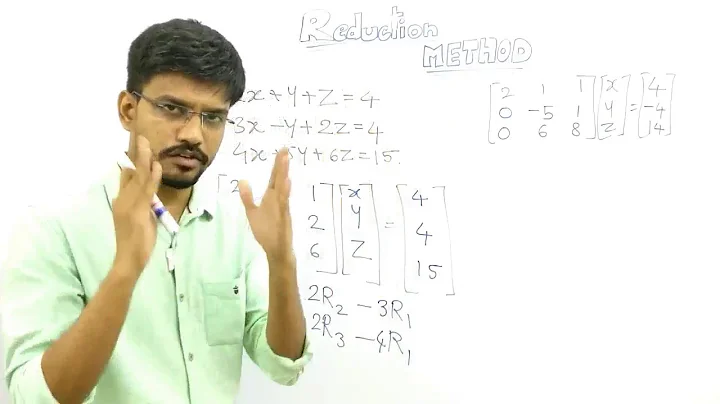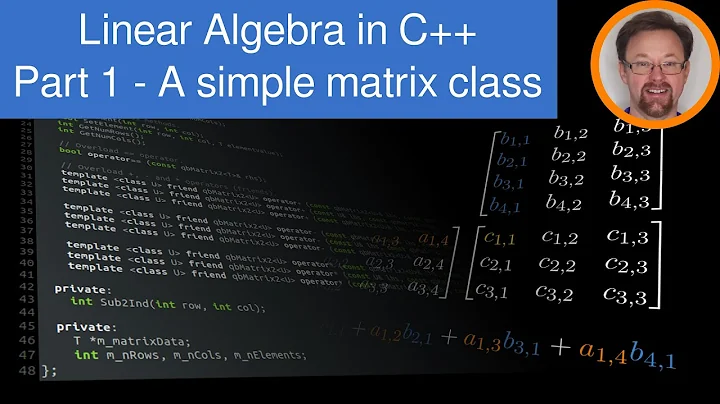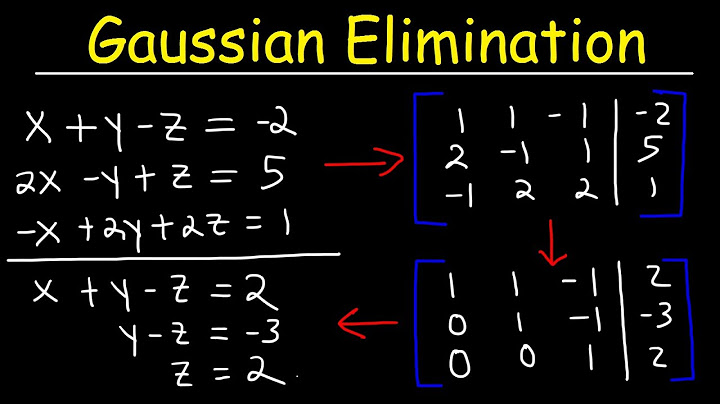Solving a simple matrix in row-reduced form in C++
The main error in you code is that you are calculating the divisor or multiplier within the for loop. You should calculate them before iterating over the cells.
Hint: debugging is easier if the code is well formated and the variables have meaningful names.
See the implementation of RowReduce():
#include <iostream>
#include <cstdlib>
#include <iomanip>
using namespace std;
void printmatrix(float A[][4]);
void RowReduce(float A[][4]);
int main()
{
float A[3][4] = {{5, -6, -7, 7},
{3, -2, 5, -17},
{2, 4, -3, 29}}; //answer should be {2, 4, -3}
printmatrix(A);
RowReduce(A);
}
void printmatrix(float A[][4]) // Outputs the matrix
{
int p=3;
int q=4;
for (int i=0; i<p; i++) {
for (int j=0; j<q; j++) {
cout << setw(7) << setprecision(4) << A[i][j] << " ";
}
cout << endl;
}
cout << endl;
}
void RowReduce(float A[][4])
{
const int nrows = 3; // number of rows
const int ncols = 4; // number of columns
int lead = 0;
while (lead < nrows) {
float d, m;
for (int r = 0; r < nrows; r++) { // for each row ...
/* calculate divisor and multiplier */
d = A[lead][lead];
m = A[r][lead] / A[lead][lead];
for (int c = 0; c < ncols; c++) { // for each column ...
if (r == lead)
A[r][c] /= d; // make pivot = 1
else
A[r][c] -= A[lead][c] * m; // make other = 0
}
}
lead++;
printmatrix(A);
}
}
The output:
5 -6 -7 7
3 -2 5 -17
2 4 -3 29
1 -1.2 -1.4 1.4
0 1.6 9.2 -21.2
0 6.4 -0.2 26.2
1 0 5.5 -14.5
0 1 5.75 -13.25
0 0 -37 111
1 0 0 2
0 1 0 4
0 0 1 -3
Related videos on Youtube
user5179531
Updated on July 29, 2022Comments
-
user5179531 almost 2 years
Okay, I am pulling out all my hair on this one, though, as a noob, I am sure there are several problems. I want to take a matrix and, by sing elementary row operations, reduced it to row-reduced echelon form. We assume (1) it is solvable and (2) a unique solution. There is no checking for zeros or anything; it just does row operations. Here is the code:
#include <iostream> #include <cstdlib> using namespace std; void printmatrix(float A[][4]); void RowReduce (float A[][4]); int main() { // answer should be { 2, 4, -3 } float A[3][4] = { { 5, -6, -7, 7 }, { 3, -2, 5, -17 }, { 2, 4, -3, 29 } }; printmatrix(A); RowReduce(A); } // Outputs the matrix void printmatrix(float A[][4]) { int p = 3; int q = 4; for (int i = 0; i < p; i++) { for (int j = 0; j < q; j++) { cout << A[i][j] << " "; } cout << endl; } } void RowReduce (float A[][4]){ //rows int p = 3; //columns int q = 4; // the determines the column we are at which holds the diagonal, // the basis for all elimination above and below int lead = 0; cout << endl; while ( lead < q - 1 ) { // for each row . . . for (int i = 0; i < p; i++) { // ignore the diagonal, and we will not have a tree rref // as the diagonal will not be divided by itself. I can fix that. if ( i != lead ) { cout << A[lead][lead] << " " << A[i][lead]; for (int j = 0; j < q; j++) { //here is the math . . . . probably where the problem is? A[i][j] = A[lead][lead] * A[i][j]; A[i][lead] = A[i][lead] * A[lead][j]; A[i][j] = A[i][j] - A[i][lead]; } cout << endl; } } // now go to the next pivot lead++; cout << endl; } }I tried doing it by hand, but what I get is, of course, the right answer, but this gets a diagonal matrix--which is great--but the wrong answer!
-
user5179531 almost 9 yearsVery nice, thanks. Not sure, however, what is wrong with mine. I also tried to do mine as I would have done by hand. Yours is a different means to get the same ends, but I am not sure still where I went wrong. Thanks for your effort though!
-
Jan Veselý over 5 yearsIs there a way to make it work for : 1 2 3 4 / 0 0 1 1 / 0 0 1 1 /






